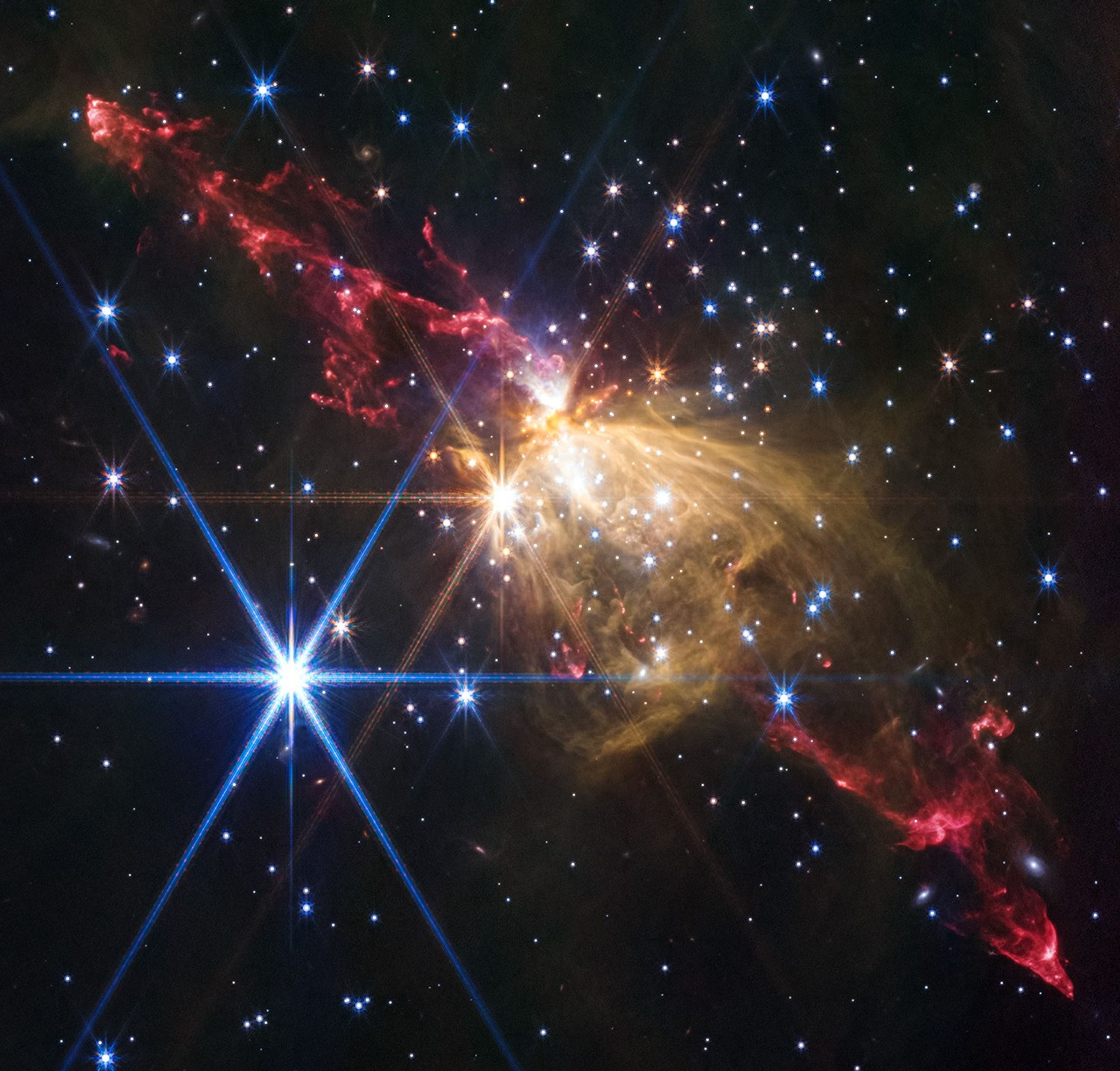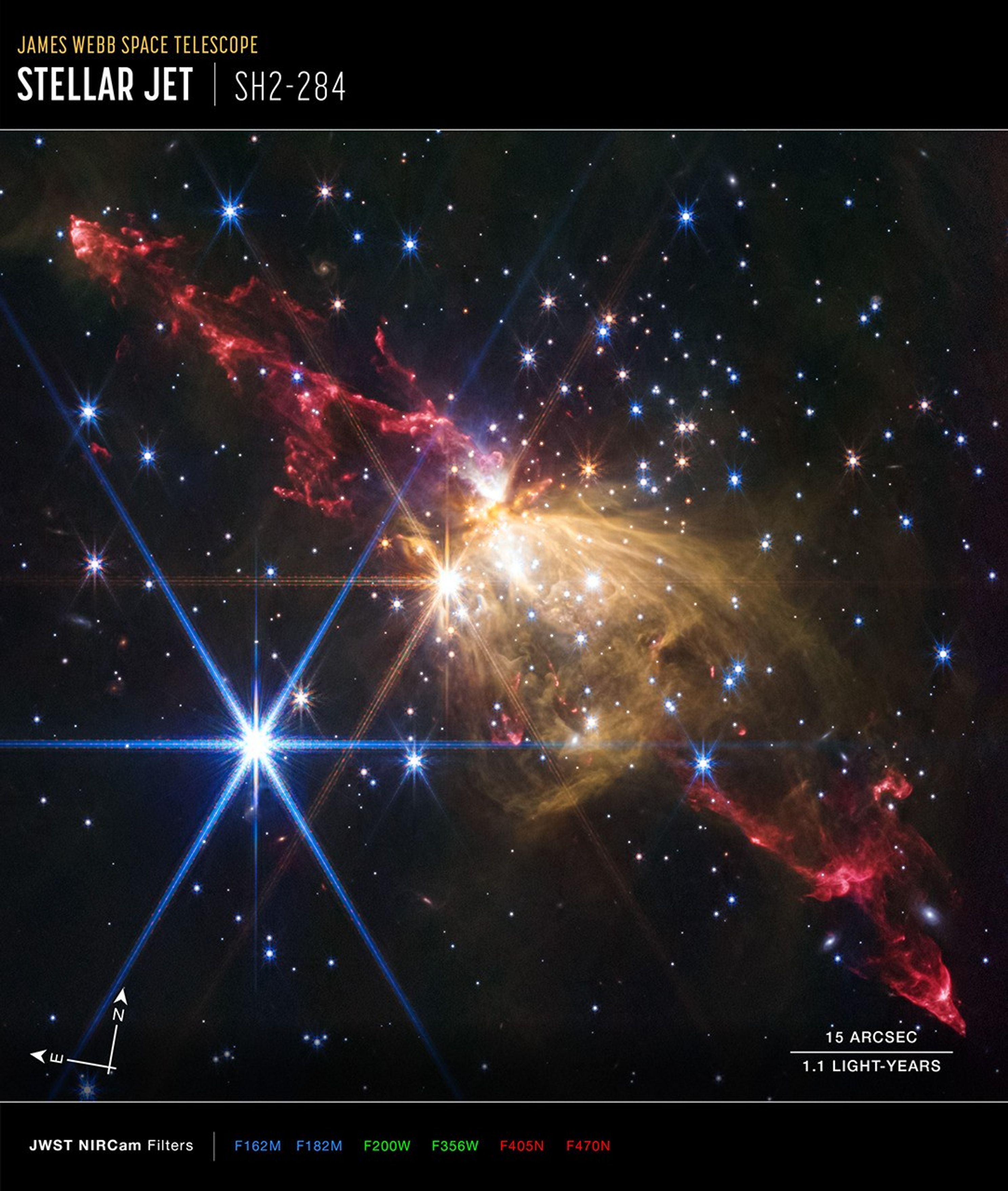1 min read
Stellar Jet in Sh2-284 (NIRCam Image)

NASA's James Webb Space Telescope recently imaged an extremely large and symmetric protostellar jet at the outskirts of our Milky Way galaxy in the forming cluster Sh2-284. From tip to tip, this protostellar jet is 8 light-years across, about double the distance from our Sun to its closest neighboring star system, Alpha Centauri.
Its detection provides evidence that protostellar jets scale with the mass of their parent star—the more massive the stellar engine driving the plasma, the larger the resulting jet—and thus for a universal mechanism for star formation from low to high masses.
About the Object
- R.A. PositionR.A. PositionRight ascension – analogous to longitude – is one component of an object's position.06:46:15.90
- Dec. PositionDec. PositionDeclination – analogous to latitude – is one component of an object's position.+00:06:27.44
- ConstellationConstellationOne of 88 recognized regions of the celestial sphere in which the object appears.Orion
- DistanceDistanceThe physical distance from Earth to the astronomical object. Distances within our solar system are usually measured in Astronomical Units (AU). Distances between stars are usually measured in light-years. Interstellar distances can also be measured in parsecs.15,000 light-years
- DimensionsDimensionsThe physical size of the object or the apparent angle it subtends on the sky.Image is about 1.6 arcmin across (about 7 light-years)
About the Data
- Data DescriptionData DescriptionProposal: A description of the observations, their scientific justification, and the links to the data available in the science archive.
Science Team: The astronomers who planned the observations and analyzed the data. "PI" refers to the Principal Investigator.This image was created with Webb data from proposal: 2317 (Y. Cheng).
- InstrumentInstrumentThe science instrument used to produce the data.NIRCam
- Exposure DatesExposure DatesThe date(s) that the telescope made its observations and the total exposure time.19 October 2022
- FiltersFiltersThe camera filters that were used in the science observations.F162M, F182M, F200W, F356W, F405N, F470N
- Object NameObject NameA name or catalog number that astronomers use to identify an astronomical object.Sh2-284 p1
- Object DescriptionObject DescriptionThe type of astronomical object.Stellar jet
- Release DateSeptember 10, 2025
- Science ReleaseNASA’s Webb Observes Immense Stellar Jet on Outskirts of Our Milky Way
- CreditImage: NASA, ESA, CSA, STScI, Yu Cheng (NAOJ); Image Processing: Joseph DePasquale (STScI)

This image is a composite of separate exposures acquired by the James Webb Space Telescope using the NIRCam instrument. Several filters were used to sample specific wavelength ranges. The color results from assigning different hues (colors) to each monochromatic (grayscale) image associated with an individual filter. In this case, the assigned colors are: Blue: F162M+F182M, Green: F200W+F356W, Red: F405N+F470N

Related Images & Videos

Immense Stellar Jet in Sh2-284
This video shows the relative size of two different protostellar jets imaged by NASA’s James Webb Space Telescope. The first image shown is an extremely large protostellar jet located in Sh2-284, 15,000 light-years away from Earth. The outflows from the massive central prot...
Share
Details
Laura Betz
NASA’s Goddard Space Flight Center
Greenbelt, Maryland
laura.e.betz@nasa.gov































